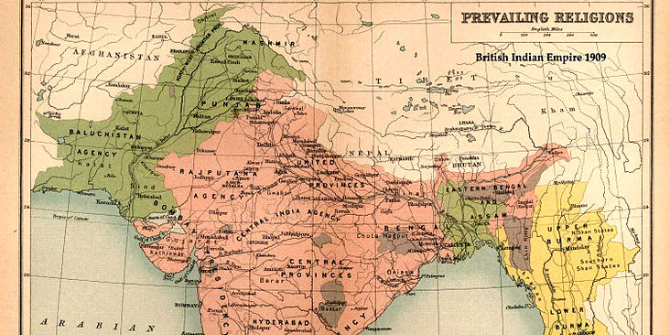LSE Library has an impressive collection of data and statistics sources on India. The range of subjects covered by the statistics is wide, including demography, industry, finance, agriculture, crime, health, and labour.
Primary sources are extremely important to researchers as they tell a story unmediated by later generations. Statistics are powerful primary sources and are often essential to convincing an audience of the validity of an argument. Those looking to do primary source statistical research on India will find much of use among the LSE Library’s impressive collection.
The most wide-ranging online source for Indian statistics available to students and researchers at LSE is IndiaStat. This e-resource covers more than 30 major socio-economic subjects, each of which is subdivided into subsections. Researchers can browse for the data or carry out a keyword search. The subjects covered range from administration to crime and from banks to social welfare. Some of the statistics are national while others are broken down by state or geographic sector.
An LSE student, Sreelakshmi Ramachandran, writes of the resource, “IndiaStat was very useful for research on matters concerning India both for my dissertation and for many essays that I had written during the year at LSE. Occasionally, Indiastat, like most databases concerning developing countries, is incomplete; for example, district-level disaggregated data could not be found. But in most cases, I used to get hints on where to look for comprehensive data by looking at data from Indiastat. For instance, looking at data on the Indian economy, I could infer that more complete data might be available from a particular publication of the Reserve Bank of India.”
Many students and researchers believe that all statistics are now available online, but this is far from the case. The sources are a mixture of print and electronic. More recent statistics may be available on government websites and online datasets, but older statistics are more likely to be found in the many statistical publications collected by LSE Library.
The earliest statistics held by the Library relate to the Indian census, which is carried out every 10 years. The LSE Library has been collecting the published documentation since 1901 and holds records up until 2001 (with the exception of 1941, when a census was not carried out due to World War II). The Library is expecting the 2011 data when it is made available. This resource currently totals 54 shelves of India-related statistics spanning 100 years. The data becomes more comprehensive and in-depth in the more recent censuses.
Another wide-ranging and long-running statistical source for India is the Statistical Abstract of India. This is an annual publication with statistics on a variety of topics, including demography, health, labour, and industry. The Statistical Abstract began in 1949 following independence. Before that date, the Statistical Abstract for British India, which began in 1920, covers similar topics and is held by the Library. The Monthly Abstract of Statistics, which the Library holds from 1948 to 2010, contains similar data on a monthly basis.
The Economic Survey for India is another extended statistical series, available from 1957 to the present. For very recent statistics the OECD Economic Survey of India is a complimentary resource. The survey is carried out periodically and the Library has the 2007 and 2011 surveys. Each edition surveys the major challenges faced by the country, evaluates the short-term outlook, and makes specific policy recommendations. Special chapters take a more detailed look at specific challenges.
A very popular statistical series held by the Library is the Annual Survey of Industries. It is available from 1960 to 2007/08 – the earlier years are available in print while the later datasets are held electronically. The data is held offline and has to be requested from the Data Library. The survey covers registered firms (with more than 10 employees and electric power or more than 20 employees) in India’s manufacturing sector. It provides detailed information on each firm, including number of factories, fixed and working capital, outstanding loans, number of workers, wages, inputs, outputs, rent paid, interest paid, and profits.
Additionally, there are a large number of non-India specific collections that will contain Indian data. These include publications by the IMF, the World Development Bank, the UN and other international and intergovernmental organisations. While these will be on the catalogue, the more historical material can be harder to locate and navigate.
Further suggestions for finding information on India can be found in the India Area Guide prepared by the Library.
This is the second of a two-part blog on India-related holdings at the LSE Library. Click here for Part 1, which describes historical materials on India in the collection.
Ellen Wilkinson is an Academic Support Librarian at the LSE Library. For more information about data holdings, contact datalibrary@lse.ac.uk.








